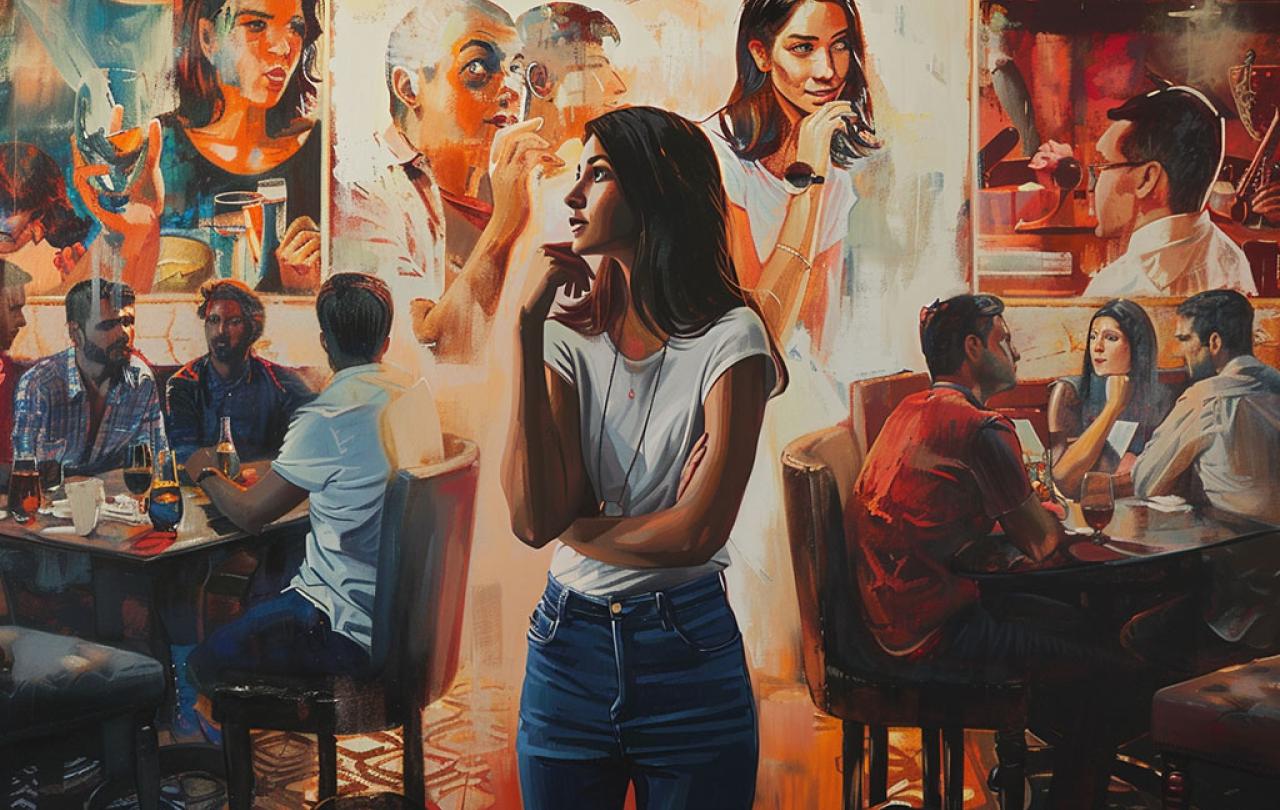
“Would you like to continue using this app?”
I stare at the question on my phone screen. It’s there by design – I have it set to prompt me every five minutes so that I don’t fall into the trap of endless scrolling. Often, it’s enough to make me close the app and move on with my day.
Today, however, I’ve been doomscrolling - endlessly flicking through the discussions around the General Election. I have already told my phone I’d like to keep this social media app for another five minutes, and another five minutes, and another. I didn’t open X with any real hope of finding answers to my many questions about the upcoming election (the crucial one being: “who should I vote for?!”). From there, I’ve fallen down a rabbit hole. There is simply too much information, and I can’t always tell what is real or true. I can’t make it more than two or three posts before I stumble across yet another logical fallacy or false equivalency.
When my phone prompts me again to close the app, I pause. I have suddenly realised that I’m upset. It has taken the pop-up box on my phone to make me pause and notice that that I’m overwhelmed and helpless but I still feel like I need to speak, say something, anything useful. But maybe there is just nothing I can say. Maybe I can’t usefully add to this debate. Or perhaps I can’t usefully discuss it in this format.
There is little nuance in the discussion – people are simply yelling at one another.
I close the app to leave this angry space.
I’m not sure I have gained any real insight into the debate from this experience. I can’t help but think that many people are here only to assert their opinion. Nobody is here to listen. Nobody is here to learn. This sort of platform encourages us to speak, to be seen speaking, but doesn’t promote discussion and debate in a way that is constructive. Let alone create a safe well-lit space for it. It doesn’t take long to find someone supposedly invalidating another’s argument by pointing out a grammatical mistake. There is no grace here.
I’m wary of following or subscribing to users who have completely different viewpoints from my own because I am concerned about my own digital image.
I find this online space a difficult one to occupy. My feed is mostly friends and a couple of carefully chosen pages. There’s nothing that is going to particularly challenge me there. I don’t particularly want social media to challenge me. It’s comforting, more than anything – a way of staying in touch with friends and family (particularly during the pandemic) and keeping up to date with organisations I’m involved in.
I don’t tend to go on social media to engage in discussions or debates. I know that this leads to something of a confirmation bias. If I get all of my information from the same sources, and from the same people all the time, I’m not going to learn about other perspectives. If I follow the trade union that supports my workplace, it’s obvious that I will only receive information supporting one particular party. If the only people I follow are people who share similar views as mine, I will simply find myself with my own opinions and feelings being validated.
It’s also worth noting that, perhaps shamefully, I’m wary of following or subscribing to users who have completely different viewpoints from my own because I am concerned about my own digital image. I worry about someone opening my page and making assumptions about my views simply based on those I follow online. I know others share this concern. Public social media accounts are sometimes a delicate exercise in personal branding. I am likely confirming someone else’s bias with my social media presence. I’m almost definitely part of that cycle.
I find myself torn between wanting to use social media more effectively to learn from other people and wanting to make it literally a pastime.
There are certainly arguments to be made about whether this approach to social media is good or bad. It’s certainly comforting though. At the end of a long day, a video of my friend’s dog is going to improve my day just a little bit more than trying to pick apart the truth from the lies in social media and in politics more generally. It’s important that I remain conscious that this is the way I have chosen to use social media. I can’t be complacent.
If I engage with other perspectives and debates, I have to do so more consciously and deliberately. I try and drop in and out of those spaces through the news tabs, tags, searching specific people who I know hold different viewpoints, or looking up specific topics. It always runs the risk of falling into the trap I’ve found myself in today – scrolling through seemingly endless perspectives that I don’t agree with, people wishing harm on another for having a different perspective, a vicious “us and them” narrative that follows through every other post. I need to learn where I can find the most accurate and reliable information. More importantly, perhaps, I need to learn how to close apps when I find myself in angry spaces where debate cannot flourish (and I’m almost never going to find that in a comment section.)
Ultimately, I don’t think I’ll stop carefully curating my social media feeds – mainly as an act of self-perseveration. It’s not that I don’t care – it is never that I don’t care. Just that the 24-hour news cycle becomes too much when there is little that I can do. I’m not going to figure out who to vote for my scrolling arguments on X or Facebook.
I find myself torn between wanting to use social media more effectively to learn from other people and wanting to make it literally a pastime. There is certainly potential for learning - I can access real-time perspectives on almost anything. On the flipside, it is becoming increasingly difficult to discern what is real and what is fake news, or simply AI generated. On the flip side, sometimes I just want to find out if anyone else was as confused by the answer to a TV quiz show as I was or just see a picture of a friend’s cat sunbathing on a windowsill.
How might we find this balance? Sadly, it seems that this is a conversation that’s now only worth having offline.





